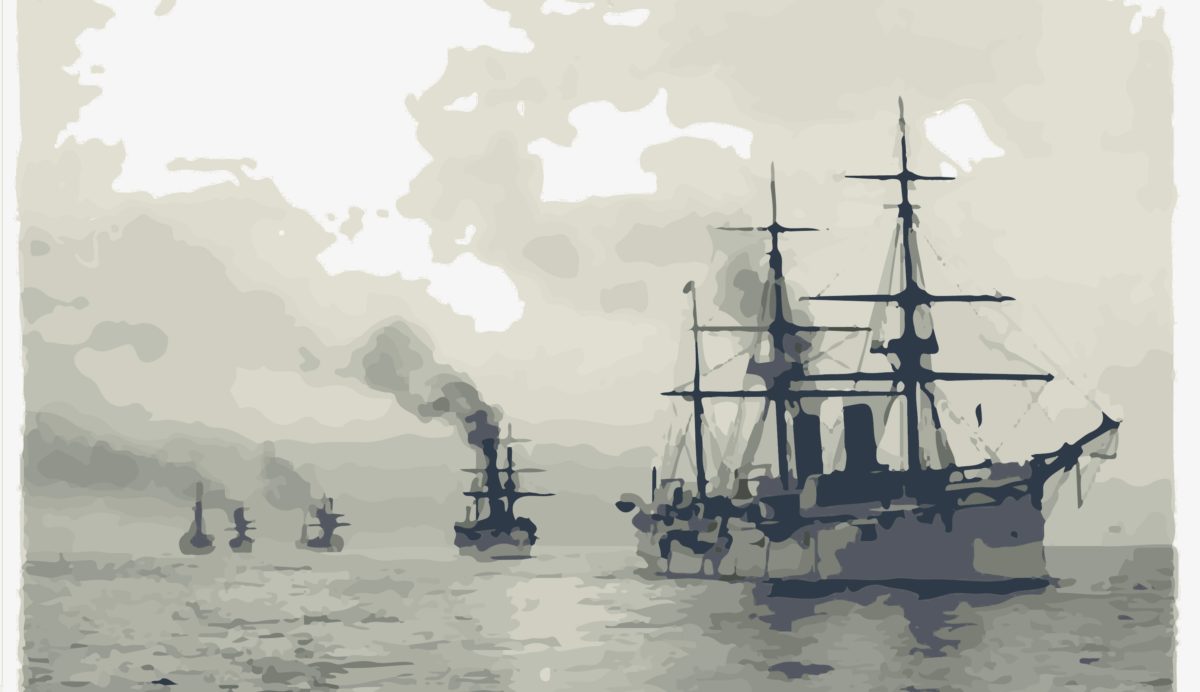In 1907, Theodore Roosevelt sent the US Navy battle fleet – the “Great White Fleet” of 16 battleships – on a symbolic tour of the Pacific. It was an awesome demonstration of the USA’s new naval power and an announcement to the world of its claims to dominion over the Pacific. The fleet was feted everywhere it went, but particularly so in Australia and New Zealand, where it was welcomed as the “kith and kin of the Anglo-Saxon race” bringing “a grateful sense of security to the white man in his antipodean isolation.” Japan was a rising military power. It had annihilated the Russian fleet in 1905. Racist attitudes towards Japanese migrant workers were running high in the USA and Australasia. “Stars and Stripes, if you please/Protect us from the Japanese”, wrote a New Zealand correspondent.
Roosevelt saw the fleet’s tour in similar terms. He was resolved to treat the Japanese government with courtesy and respect. But he wanted to assert the importance of keeping the world’s “races” apart, particularly when it came to migration into California, and he inflected his Social Darwinist arguments with a class populism: “we have got to protect our working men”, he was reported to have argued. “We have got to build up our western country with our white civilization, and…we must retain the power to say who shall and who shall not come to our country. Now it may be that Japan will adopt a different attitude, will demand that her people be permitted to go where they think fit, so I thought it wise to send that fleet around to the Pacific to be ready to maintain our rights”[1].
Roosevelt was heavily influenced by the naval strategist Admiral Alfred Mahan, whose books on the importance of sea power and naval strength were key military texts in the late 19th and early 20th century, read and absorbed not just by US foreign and defence policymakers, but by their counterparts in the capitals of all the leading world powers – including Great Britain, whose naval prowess he much admired. He was also highly influential on Roosevelt’s fifth cousin, Franklin D. Roosevelt, who devoured Mahan’s books as a young man and was a lifelong navy enthusiast, serving as Assistant Secretary for the Navy in Wilson’s administration. As President, FDR would massively expand the US Navy. Spending on the navy – a sort of naval Keynesianism – gave renewed impetus to the New Deal in the late 1930s.
Donald Trump’s speech at the Newport News shipyard, which builds ships for the US Navy, and his pledge to expand the fleet to 350 ships, therefore stands in a clearly defined lineage. It heralds a renewed commitment to assert the naval primacy of the USA and significantly boost military spending. On its own, that might be lifted straight out of the recent Republican playbook – particularly in concert with tax cuts for the wealthy. But Trump’s economic nationalism and his anti-Muslim, anti-immigration rhetoric also trace a line back to fin-de-siècle Anglo-Saxonist political discourse. His rhetoric symbolically connects the projection of economic and military power to the fortunes of the American working class, particularly the white working class – Teddy Roosevelt shorn of the progressivism and diplomatic tact.
This time, of course, the main antagonist is China, not Japan. China’s navy has been expanding rapidly under Xi Jinping’s leadership. It has commissioned new missile carriers, frigates, conventional and nuclear submarines, and amphibious assault ships. A close ally of Xi’s, Shen Jinlong, has recently been appointed its commander. It has moved from defensive coastal operations to long-range engagements around the world. It will serve to underpin China’s assertion of supremacy in the South China Sea and the projection of its power further afield – towards the Indian Ocean, the Gulf and the Maritime Silk Road routes.
The respective strength and reach of national navies can mark out wider shifts in geo-political power. It was at the Washington Conference in 1921 that the USA finally brought the Royal Navy to heel, insisting on parity in capital ships, and setting the seal on the end of the British Empire’s global maritime supremacy. “Never before had an empire of Britain’s stature so explicitly and consciously conceded superiority in such a crucial dimension of global power,” wrote Adam Tooze of this capitulation. It would take until the late 1960s, when Britain finally abandoned its bases East of Suez, for the process of imperial contraction to be complete (a decision that the current Foreign Secretary laments and risibly promises to reverse).
With tension rising in the South China Sea, war and rival power conflict in the Middle East and the Gulf region, and the prospect of a scramble for power over the sea lanes of the melting ice caps of the North West Passage, this new era of naval superpower rivalry echoes the Edwardian world. Steve Bannon, President Trump’s self-declared economic nationalist adviser, believes it will end the same way: in war. It is up to the rest of the world to prove him wrong.
[1] For this quotation and other source material, see Marilyn Lake and Henry Reynolds, Drawing the Global Colour Line, Cambridge: CUP (2008), Chapter 8 pp 190 - 209
Respond




